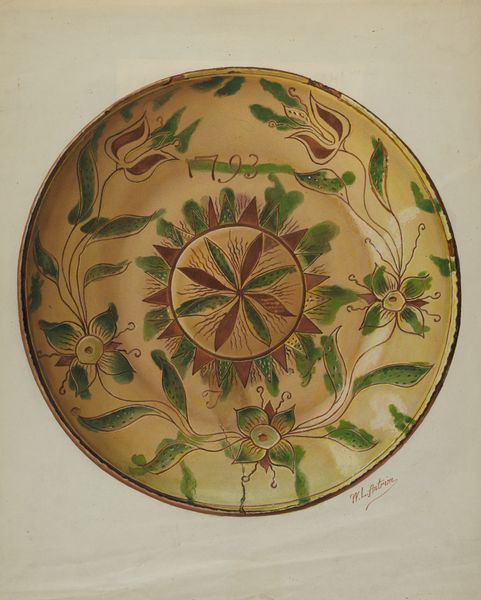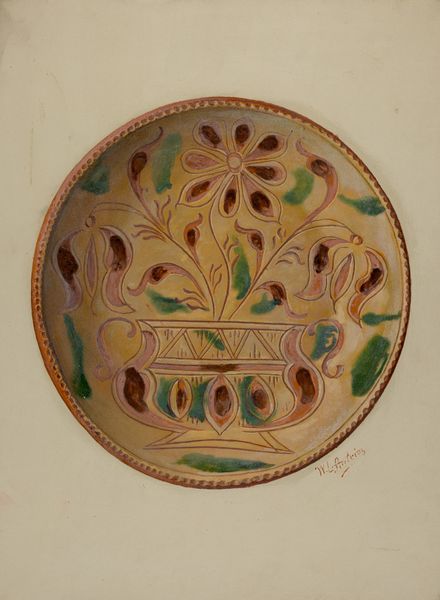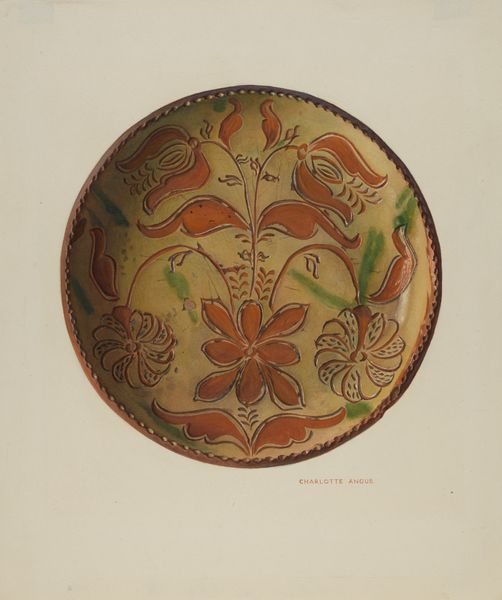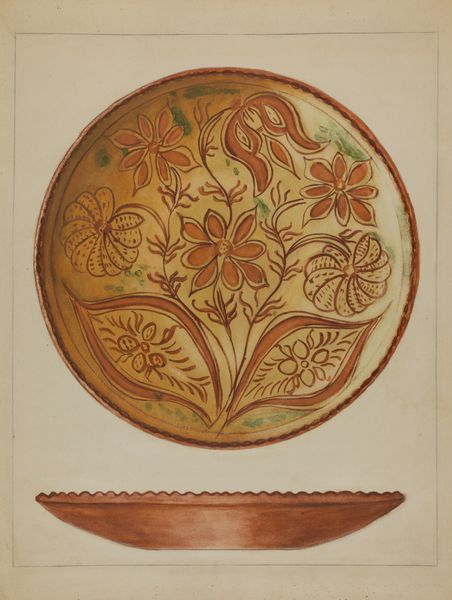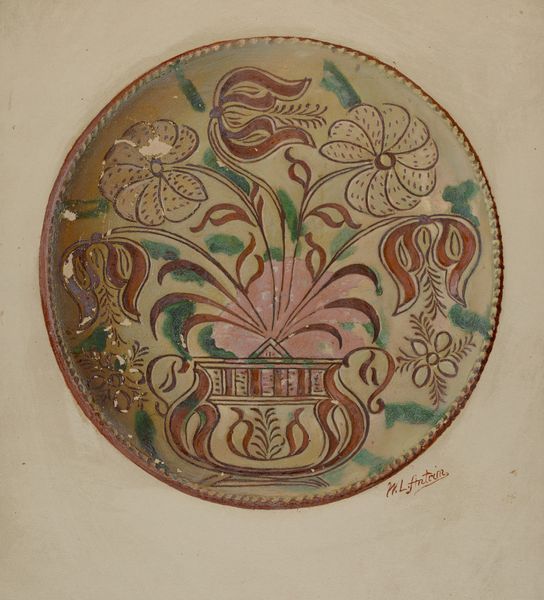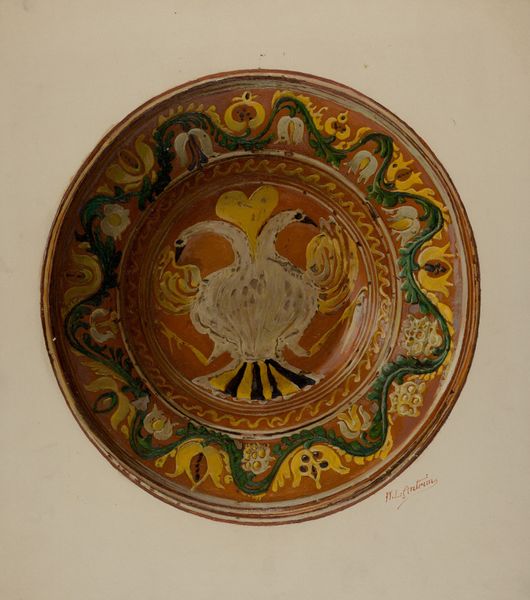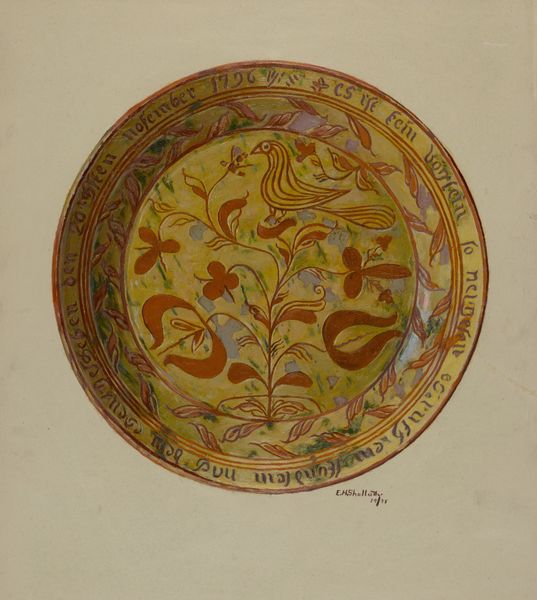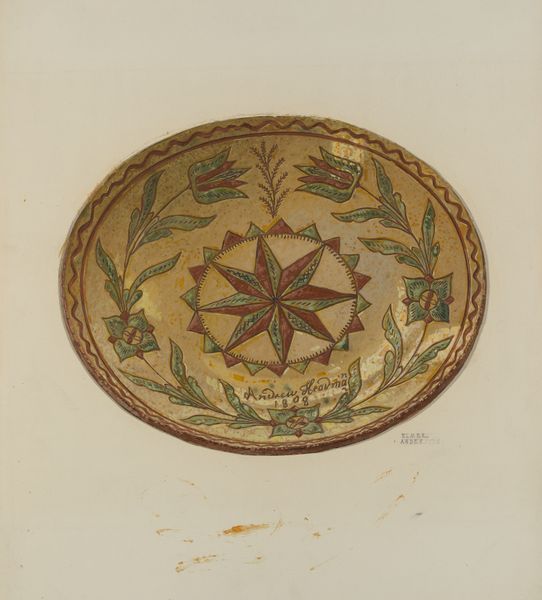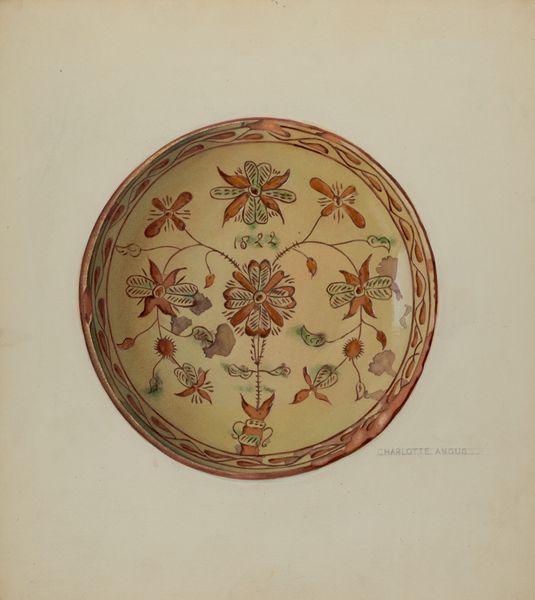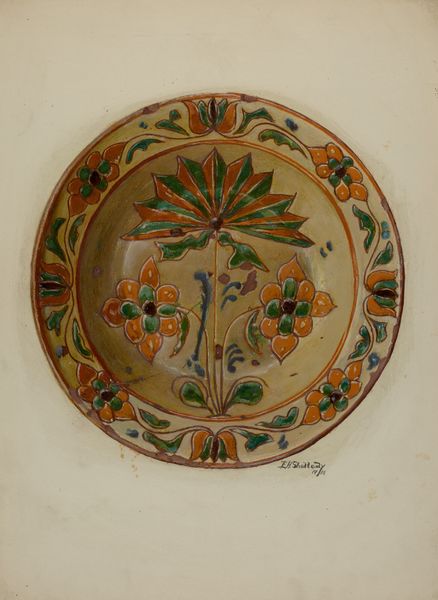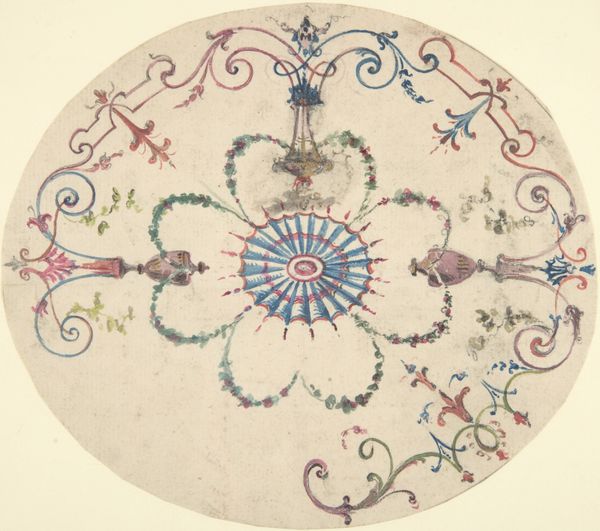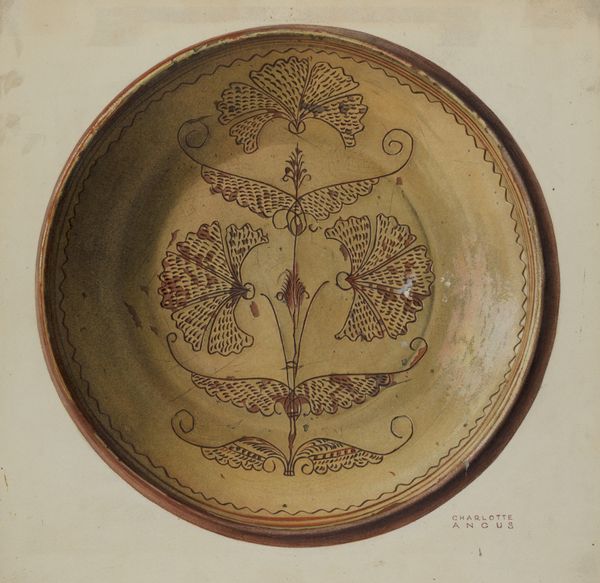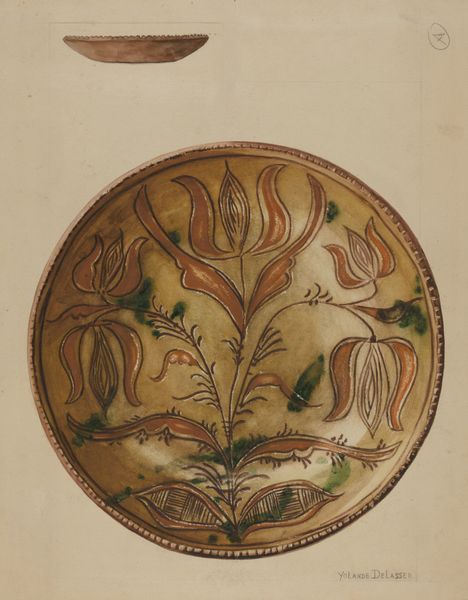
painting, watercolor
#
water colours
#
painting
#
watercolor
#
folk-art
#
decorative-art
#
watercolor
Dimensions: overall: 53.7 x 45.5 cm (21 1/8 x 17 15/16 in.)
Copyright: National Gallery of Art: CC0 1.0
Editor: This is William L. Antrim's "Pa. German Dish," a watercolor painting from around 1936. It’s so charming! It gives off such a folksy, homey feel. What symbols do you see in this piece? Curator: Well, at first glance, we see the central rosette, radiating outwards—it's a classic solar symbol, representing life, energy, and divine power in many cultures, often promising abundance and protection. And do you notice the date, 1793, nestled amongst the tulips? Editor: Yes, I do. Is there a reason why it's so prominent? Curator: That date potentially links it to the original creation of such works, connecting it to the cultural memory embedded in Pennsylvania German folk art. Tulips, though, are fascinating. They often signify love, faith, or hope, depending on the culture, and in the Pennsylvania Dutch tradition, they also represent the Holy Trinity. What does that juxtaposition of the date and the floral symbolism suggest to you? Editor: So it could be hinting at a continuous tradition, love of the craft passed down through generations? Curator: Precisely! These images aren't merely decorative. They are carriers of cultural memory, of shared beliefs and values. Do you see how the artist employs these established symbols to reinforce a sense of community and continuity? Editor: It’s almost like a visual language connecting people across time! Curator: Exactly. This artwork becomes more than just a pretty image; it is a testament to cultural resilience and the enduring power of symbols. It invites us to remember and reconnect. Editor: This was a very enlightening analysis of Antrim's work. Thanks to this conversation, I see how potent a painted dish can be!
Comments
No comments
Be the first to comment and join the conversation on the ultimate creative platform.
